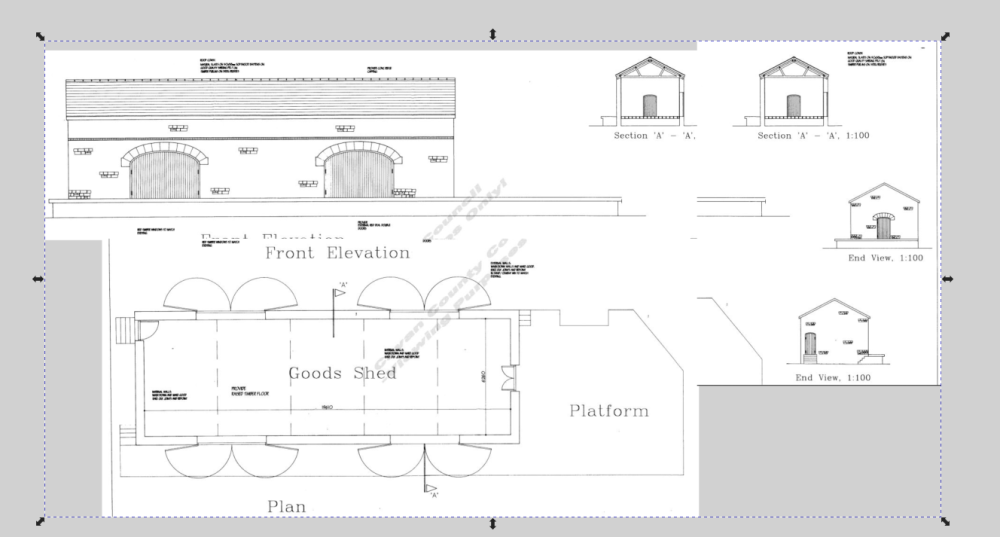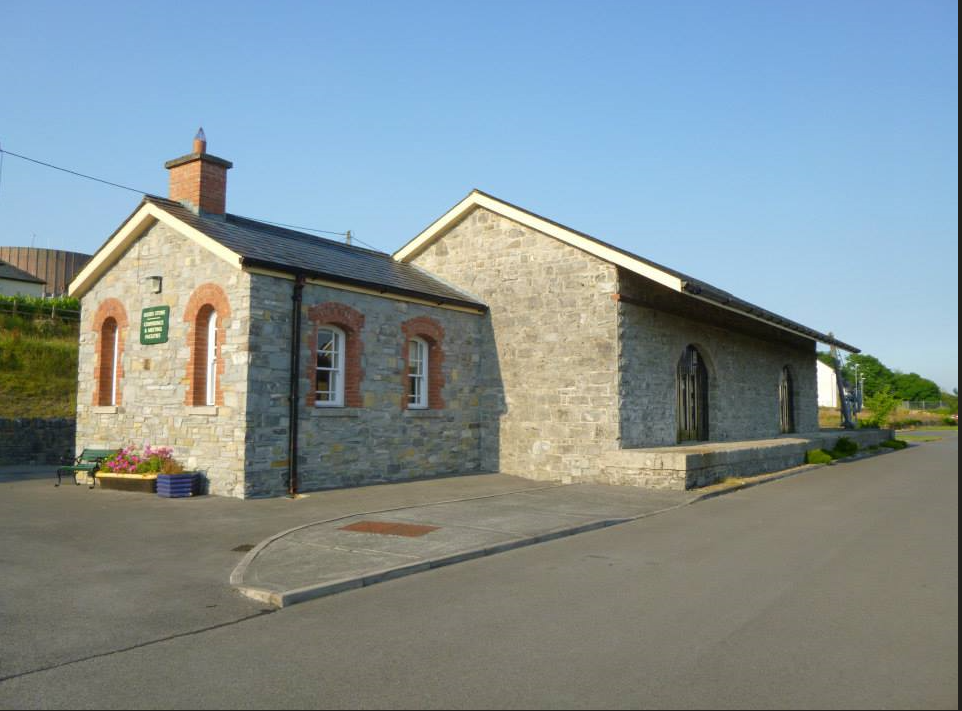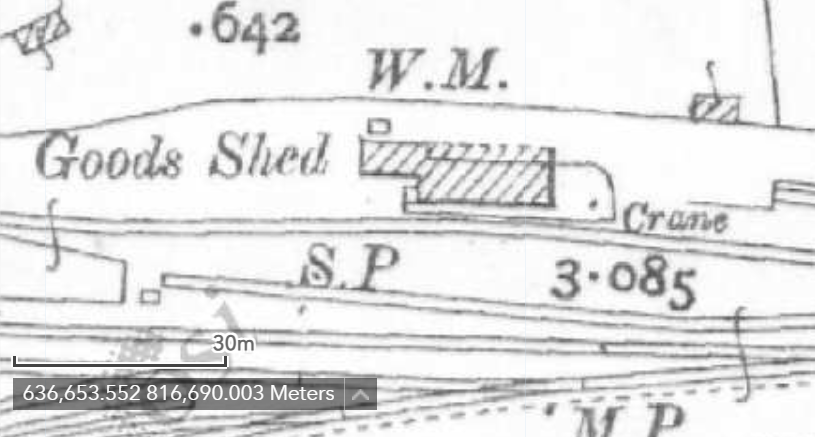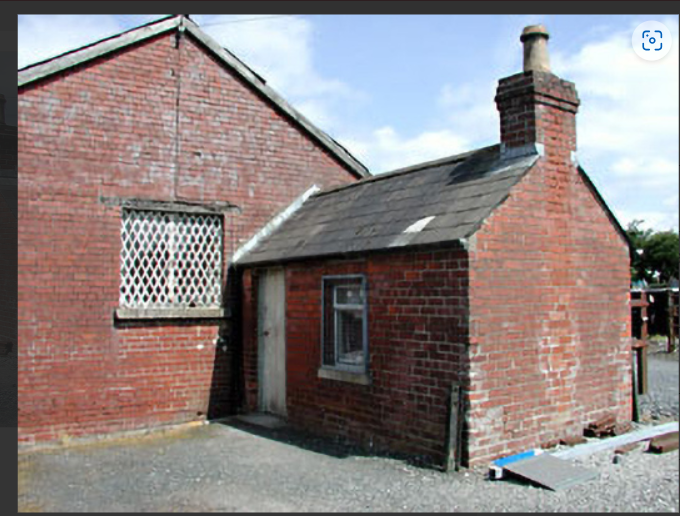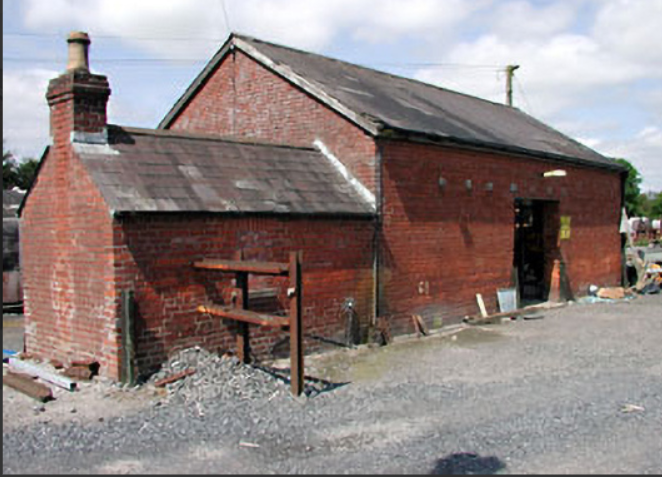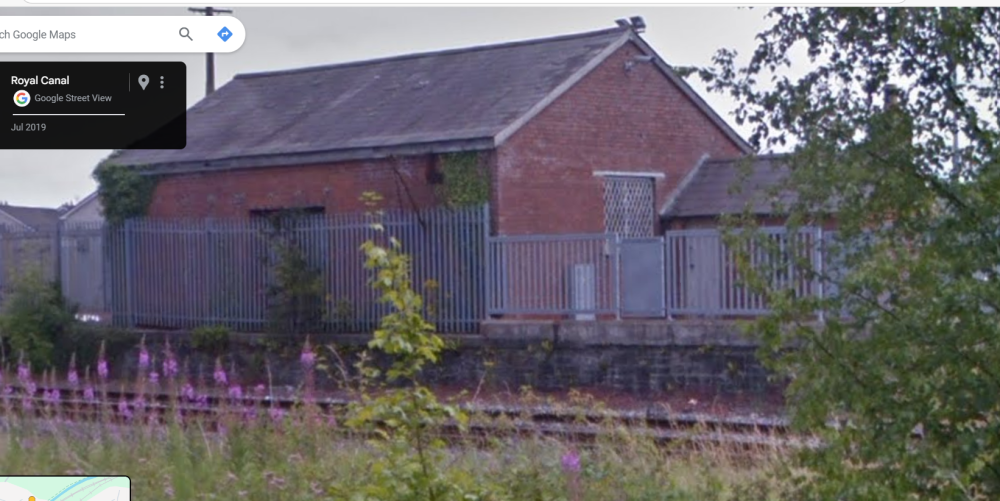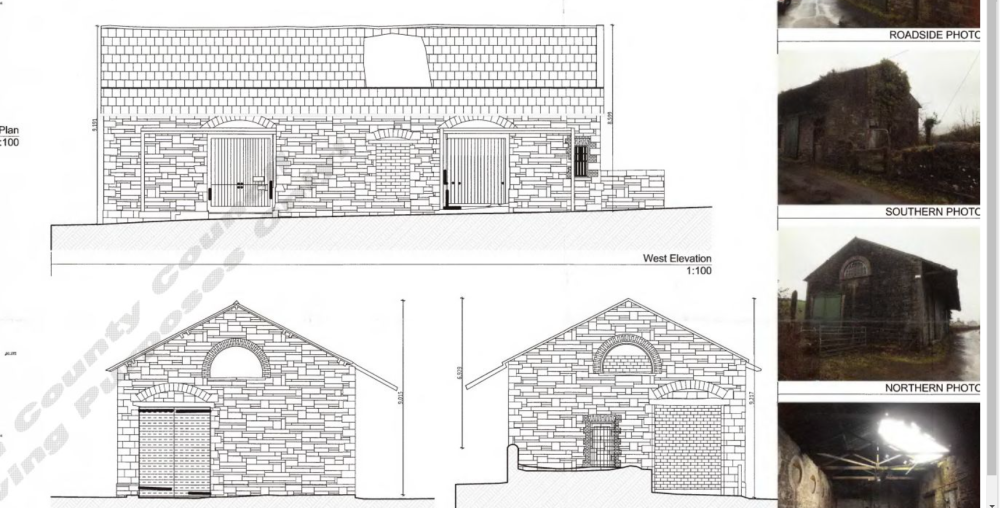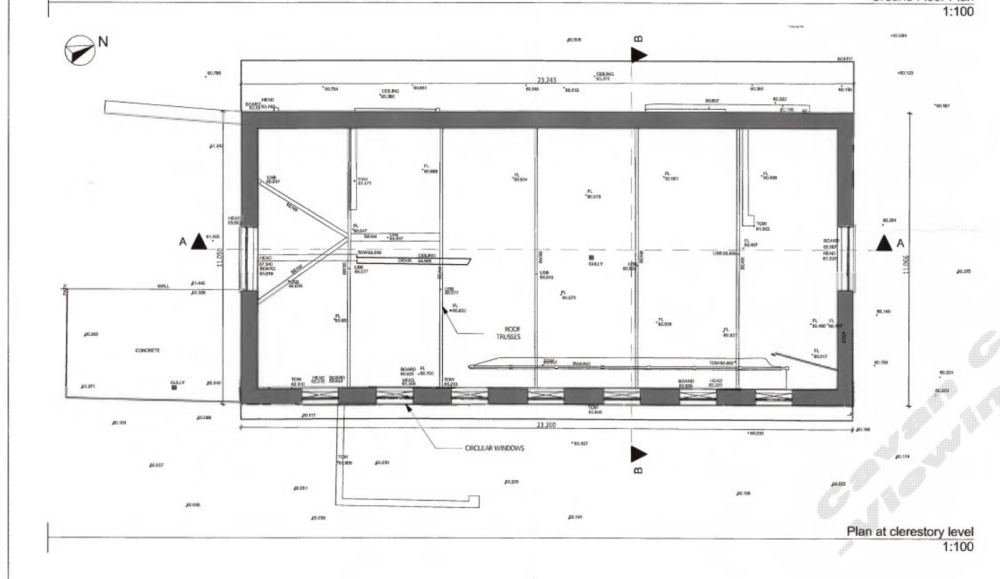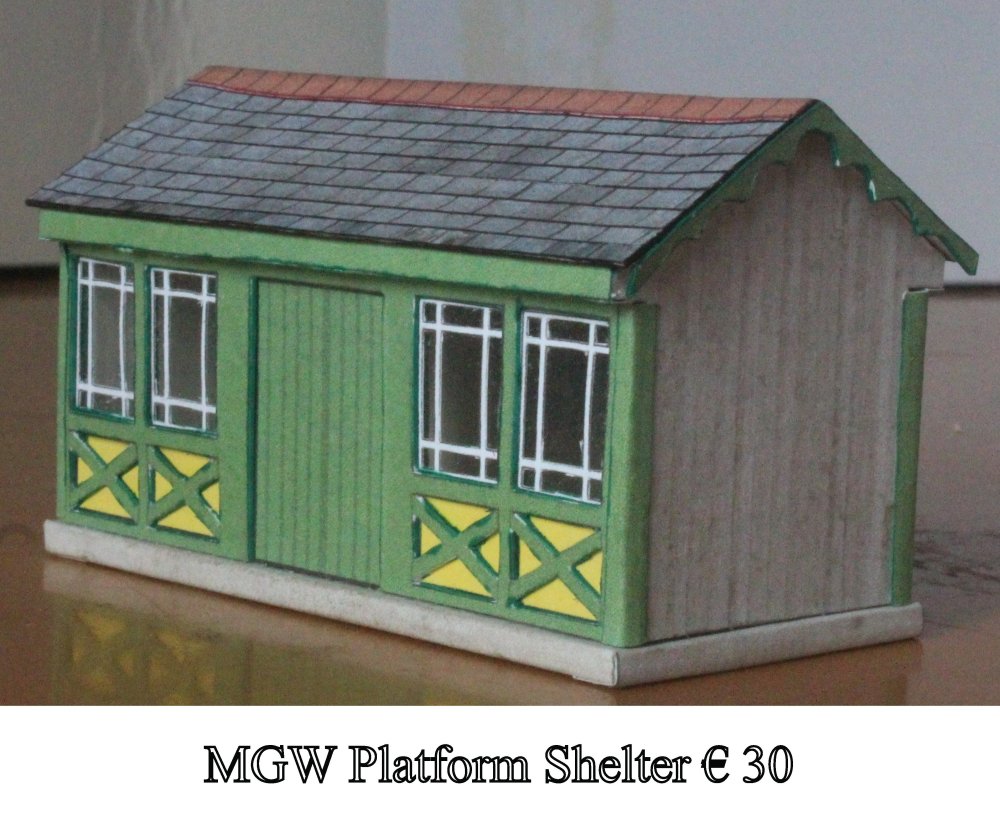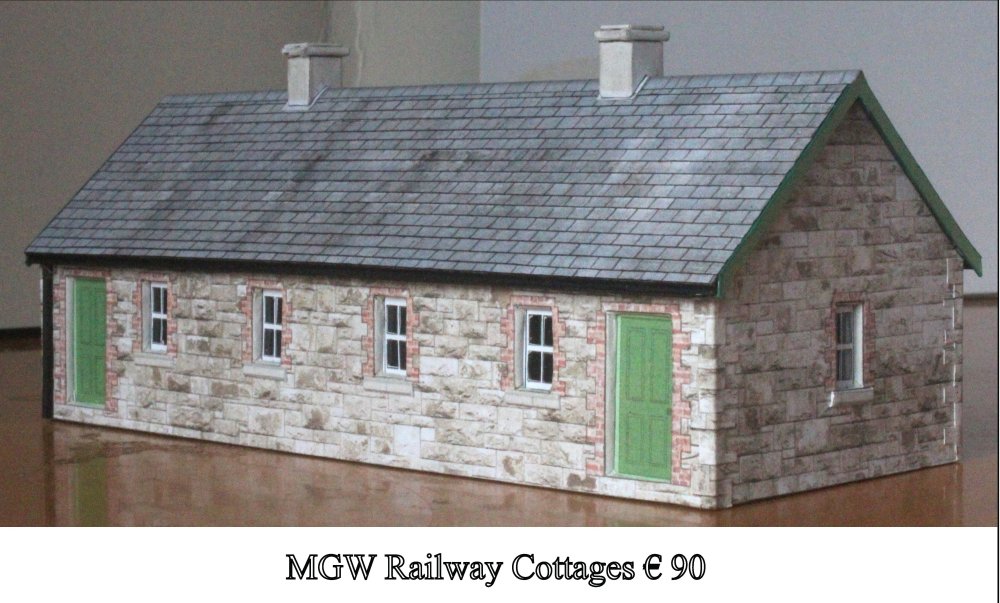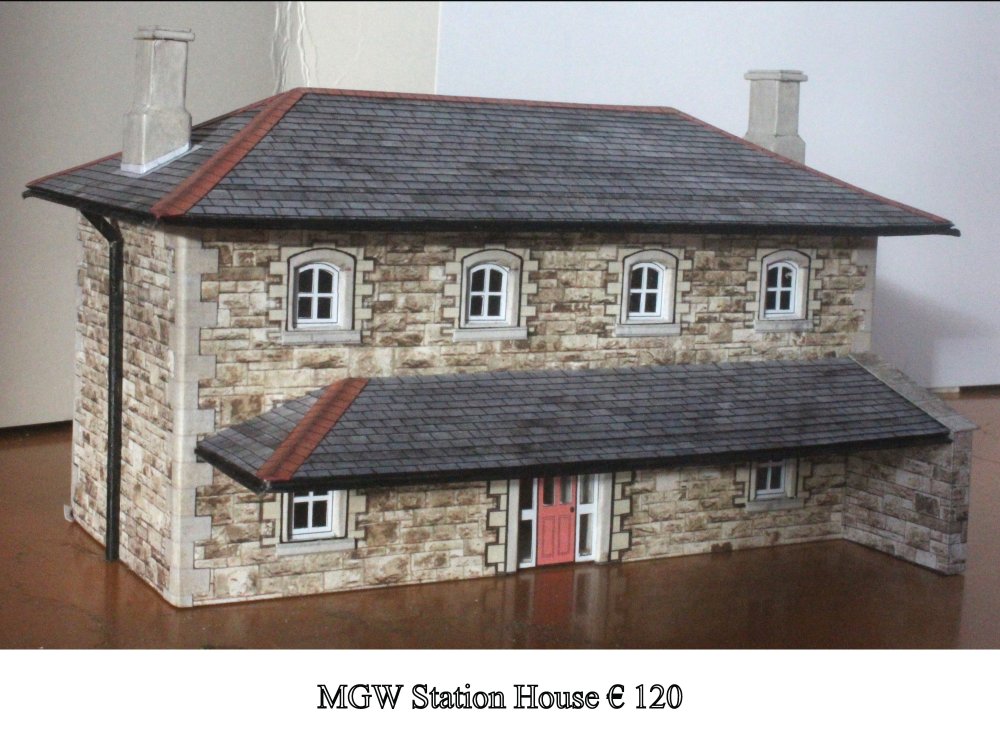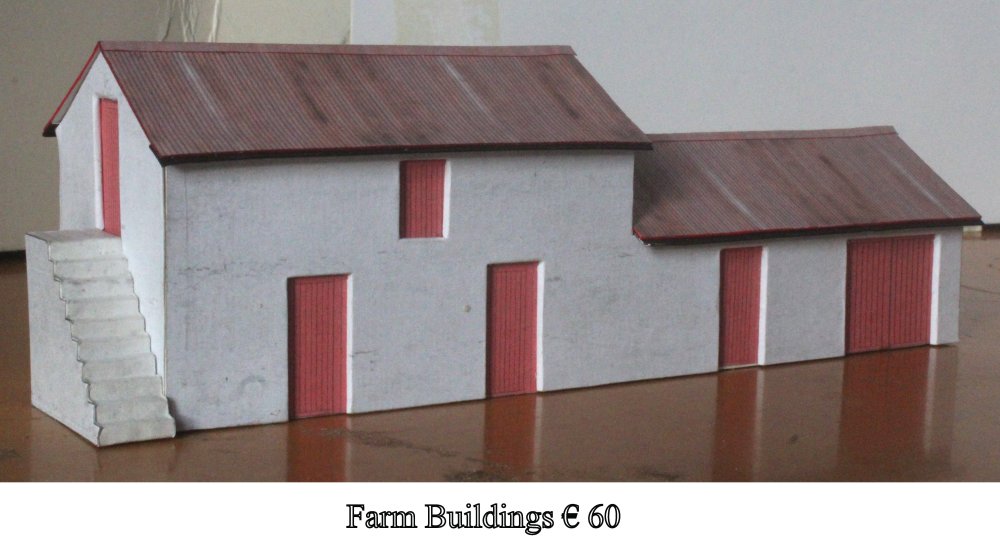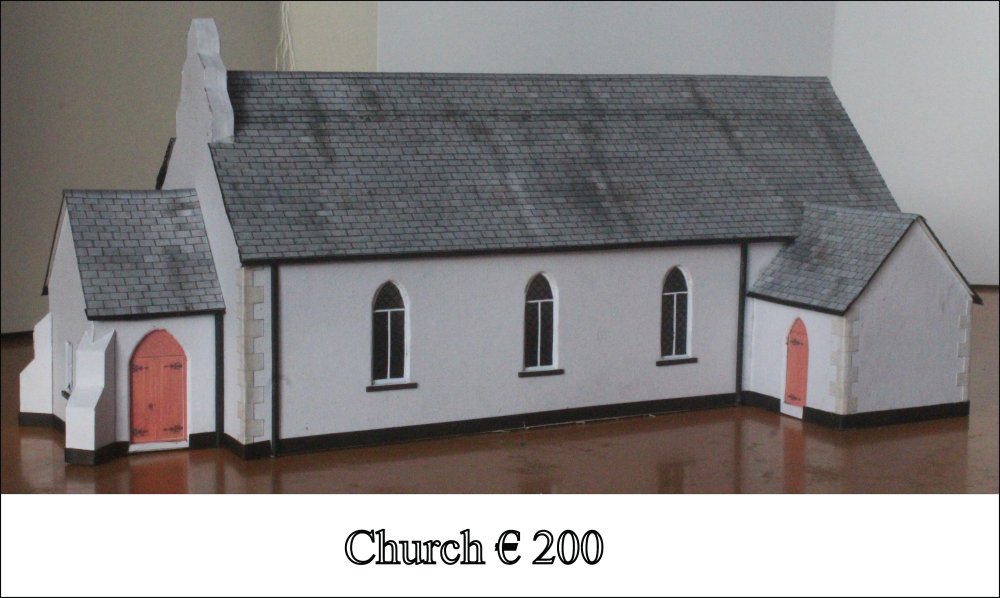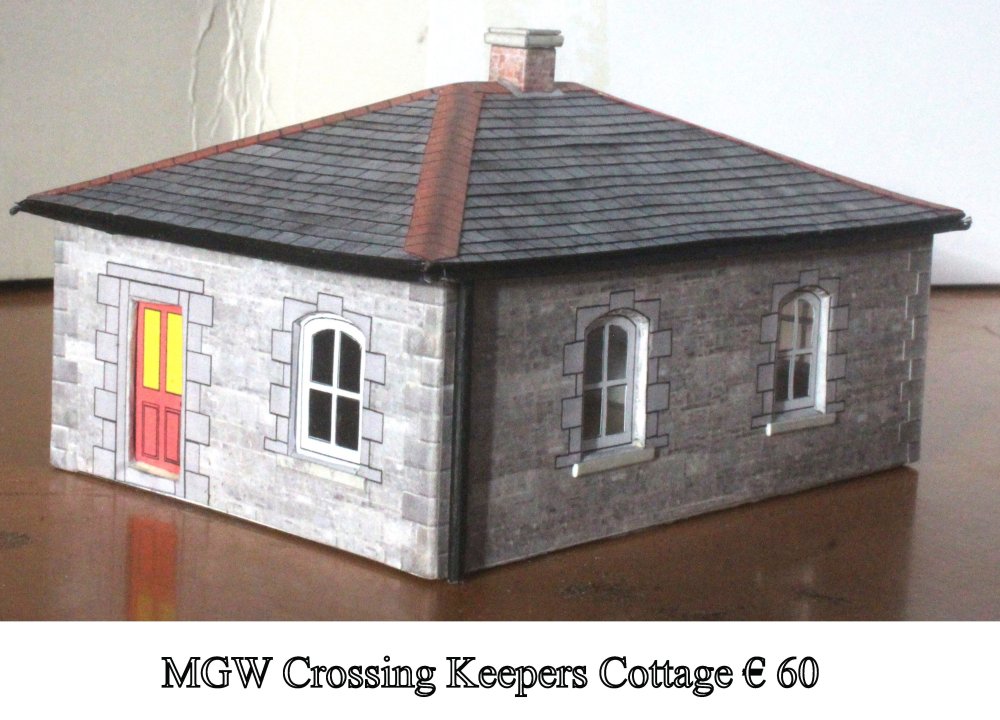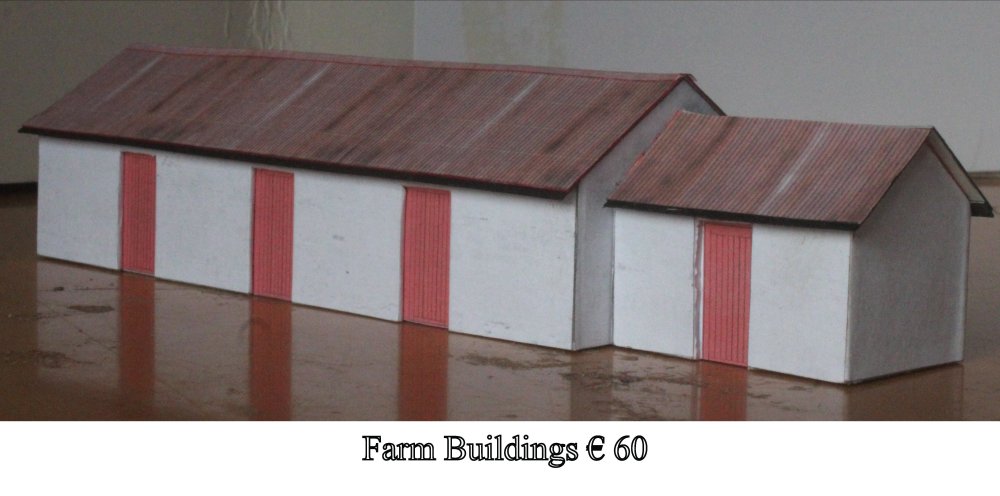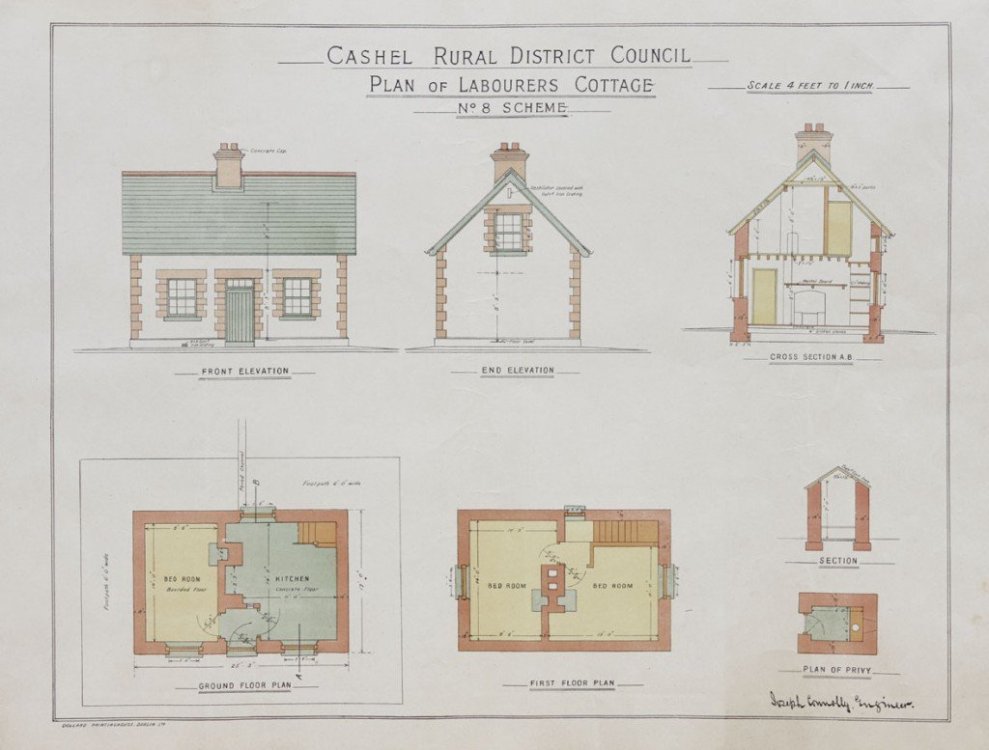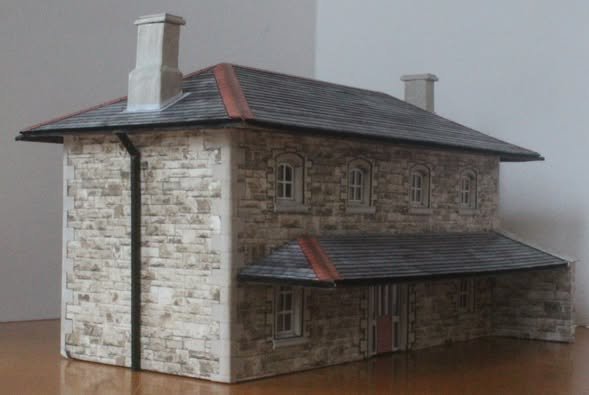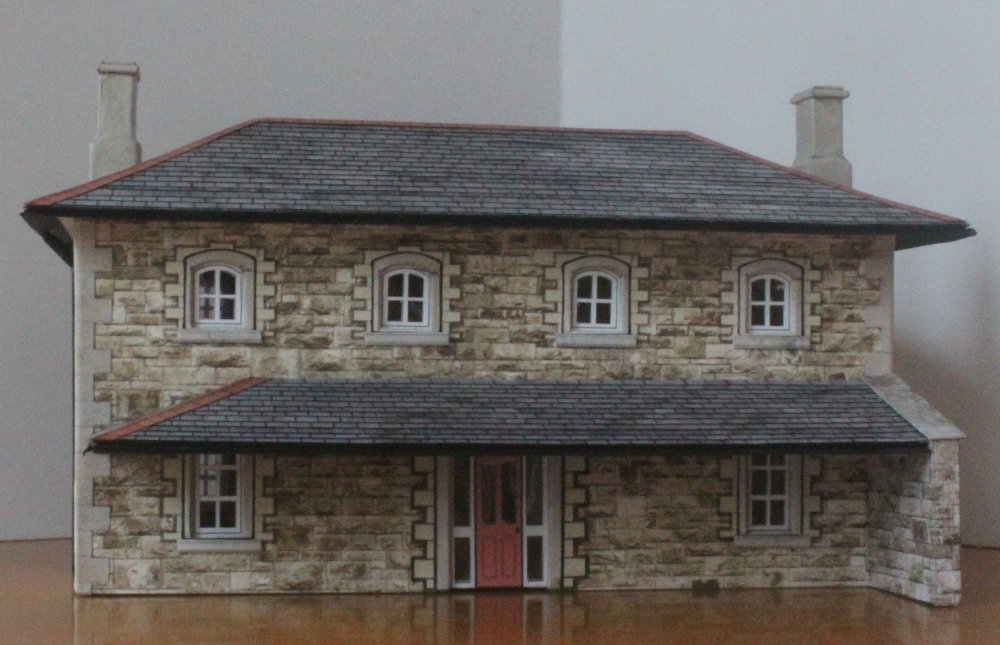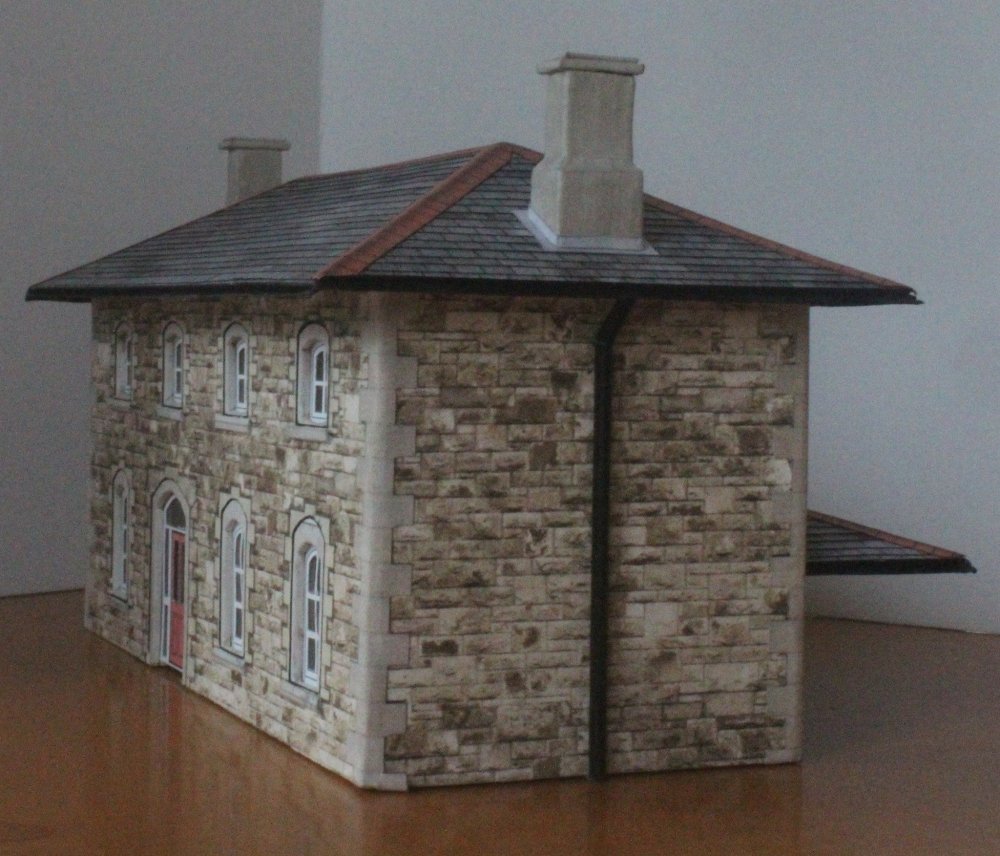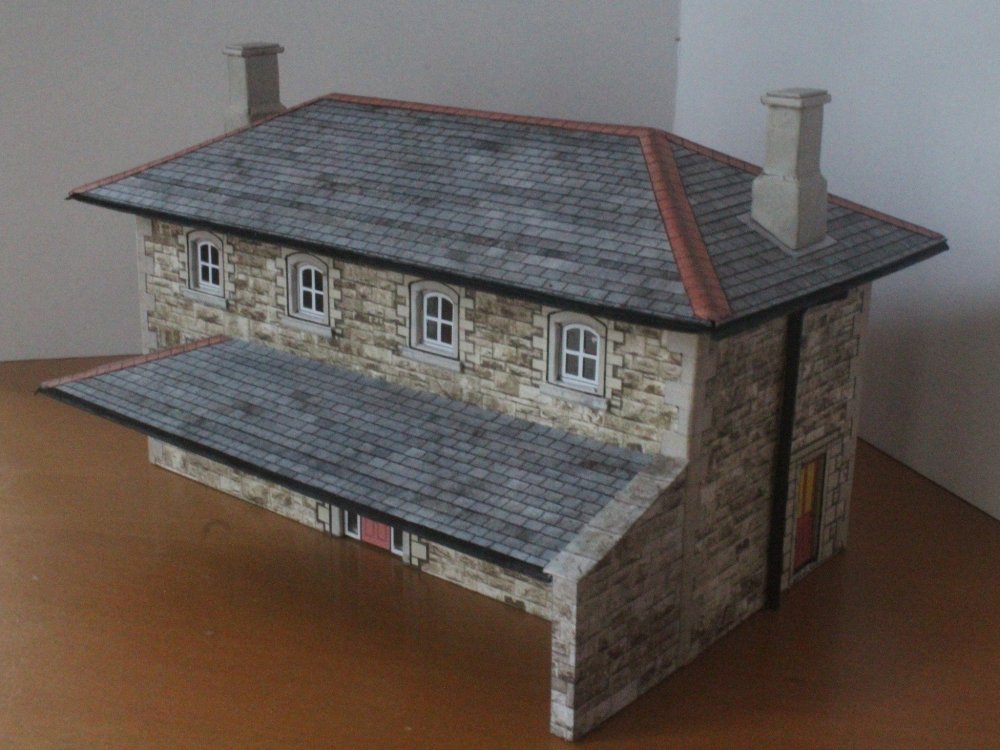
Kevin Sweeney
Members-
Posts
255 -
Joined
-
Last visited
-
Days Won
10
Content Type
Profiles
Forums
Events
Gallery
Blogs
Store
Community Map
Everything posted by Kevin Sweeney
-
-Plans, photo and map of Belturbet Goods Shed. This is a GNR shed, which fits the theme of your layout.
-
Some photos of Enfield Goods Shed. The OS maps at geohive.ie would give you the footprint of the building and by counting the bricks it would be easy to workout the heigh.
-
Here are plans of Crossdoney goods shed. This 6 bay shed was originally built as a 3 bay shed. If your looking for a very simple good shed Enfield would be an easy one to make. If you go to the Cavan County Council planning portal, you can also find plans of the GNR goods shed at Belturbet. I'm very impressed with the collection of interesting buildings on your layout, a great representation of the kind of buildings found in many Irish towns.
-
N Scale Ballywillan, Co Longford.
Kevin Sweeney replied to Kevin Sweeney's topic in Irish Model Layouts
I remade Corrigeenroe Church, this time in N scale. I have not used texture sheets for the walls or the plinths, but instead just painted them with white and black acrylic paint. This makes it much easier to hide the joints. On the OO model I used quoins to hide the joints, but the real church has no quoins, so the N scale version is closer to the real thing. -
-
N Scale Ballywillan, Co Longford.
Kevin Sweeney replied to Kevin Sweeney's topic in Irish Model Layouts
Thanks Patrick, I loved the simplicity of this church as a subject to model. I'm thinking of making it in N scale as well. The real thing is in a beautiful location overlooking Lough Key, at the foot of the Curlew Mountains. Although the unfortunate residents of the area, including my in-laws are still without power since the night of the big wind. -
N Scale Ballywillan, Co Longford.
Kevin Sweeney replied to Kevin Sweeney's topic in Irish Model Layouts
Done. I've posted the plan of the labourers cottage there. It awaits approval by a moderator. I have a lot of other plans, if the moderator approves this one I will post everything I have there. -
N Scale Ballywillan, Co Longford.
Kevin Sweeney replied to Kevin Sweeney's topic in Irish Model Layouts
The privy would be a quick build. I love those old plans, they are not just stunningly accurate (compared to modern plans) they are also works of art in themselves. It strikes me I should start a thread somewhere on this forum for users to post and view such plans. Can anyone suggest the best section to start such a thread. It would be a useful resource for scratch builders. -
N Scale Ballywillan, Co Longford.
Kevin Sweeney replied to Kevin Sweeney's topic in Irish Model Layouts
-
N Scale Ballywillan, Co Longford.
Kevin Sweeney replied to Kevin Sweeney's topic in Irish Model Layouts
- 410 replies
-
- 11
-

-

-
N Scale Ballywillan, Co Longford.
Kevin Sweeney replied to Kevin Sweeney's topic in Irish Model Layouts
I've done another range of outbuildings to go with the farmhouse, which creates a classic vernacular farmyard layout. I have long wanted to build a barn church, inspired by Patrick's church on the Clogherhead layout. I picked Corrigenrore Church in North Roscommon to base it on. I was able to use Google street view for an all round photo survey of the building. I also have a sentimental attachment to it, as my late wife grew up in that parish and it was her local church. Scale is OO I have simplified the structure further and it now only needs 14 parts to build the basic structure (not including windows) without the roof. It was a bit of an experiment to see if such a simple structure would be strong enough. The end result is quite sturdy -
N Scale Ballywillan, Co Longford.
Kevin Sweeney replied to Kevin Sweeney's topic in Irish Model Layouts
-
N Scale Ballywillan, Co Longford.
Kevin Sweeney replied to Kevin Sweeney's topic in Irish Model Layouts
-
N Scale Ballywillan, Co Longford.
Kevin Sweeney replied to Kevin Sweeney's topic in Irish Model Layouts
Thanks Patrick. I'm really enjoying modelling in OO. The storm was good for my modelling as I had a backup power system, which allowed me to keep my PC and printer going, and with communications out there were no interruptions. As the saying goes it's an ill wind that doesn't blow someone good. -
N Scale Ballywillan, Co Longford.
Kevin Sweeney replied to Kevin Sweeney's topic in Irish Model Layouts
- 410 replies
-
- 10
-

-

-
My power and communications came back early this afternoon. I was well preped for an event like this, I have a Stanley 8 range for heating and cooking, a rainwater tank for water and a small back up power system, three solar panels, batteries and an invertor. Thanks to my power back up I able to keep my computer and printer working, so the modelling never stopped. Almost as important I was able to keep my e-bike battery charged. Ironically several of my neighbours have big arrays of solar panels on their roof which only feed power to the grid, so they had huge power generation capability but no way to use it. I was at a party on Friday night and cycled home at about 3 am. It was a beautiful starry night and the night sky was amazing to see with no light pollution.
-
N Scale Ballywillan, Co Longford.
Kevin Sweeney replied to Kevin Sweeney's topic in Irish Model Layouts
My latest creation, a farmhouse in OO. Not finished yet as I am going to add a shed onto one gable. Also needs ridge tiles and downpipes. I was at the Train and Model fair in Bray on Sunday. A good day out. Good to meet other model makers, I came home with lots of new idea. I sold two models. I will be there next month with 4 different models to sell, including this farm house. -
100 euros for the signal cabin and 100 for the cottage. 200 for the station house.
-
Fear not they are in 4 mm. Even though I normally model in N, when making models to sell I was very aware that 4 mm is the big market in Ireland. If they sell well I will be making more and will be adding more buildings to the range. The plan is to add a MGW goods shed, water tower, engine shed and platform shelter. Once I have those done, I plan to produce the same range of buildings in Great Northern and then in Great Southern. If there is any demand I can also make them in N.
-
N Scale Ballywillan, Co Longford.
Kevin Sweeney replied to Kevin Sweeney's topic in Irish Model Layouts
-
That's beautiful work Patrick, a wonderful winter scene. I have long been thinking of doing a brick Great Northern Station. I've saved the plan you posted here into my future projects folder.
-
N Scale Ballywillan, Co Longford.
Kevin Sweeney replied to Kevin Sweeney's topic in Irish Model Layouts
-
I will be at the next fair selling some of my models. I have 3 MGW station houses, 2 MGW signal cabins and a MGW crossing keepers cottage. I will also have a collection of OO track to sell.
-
N Scale Ballywillan, Co Longford.
Kevin Sweeney replied to Kevin Sweeney's topic in Irish Model Layouts
After the long campaign required to do the county museum, this one seems easy. I am always attracted to a building that has features I never built before. I like a challenge. It was indeed a beautiful building, we are particularly poor in Cavan at preserving our architectural heritage. -
How do you get a stall at the fair, do you just show up on the day or does it have to be booked before hand. I have some OO trackwork and accessories I want to sell.
.png.c363cdf5c3fb7955cd92a55eb6dbbae0.png)
